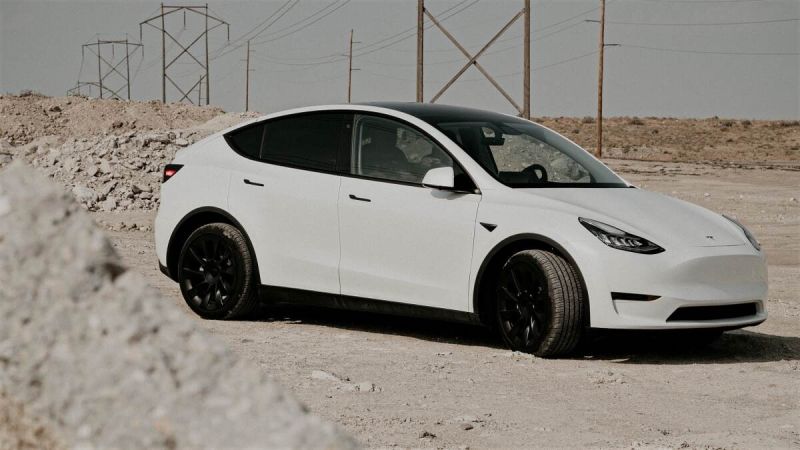It’s well-known that temperature---both from the weather and the battery cooling efficiency---of a car plays a significant role in just how temperature deviations can adversely affect an EV battery’s charge and performance with premature charge drain.
What is not so well-known, however, is just how much drain can you expect while on a road trip and under a variety of temperature conditions involving the weather with many of the popular EVs available today that consumers are switching to, over gas-only and Hybrid model cars and trucks.
True EV Range Questioned
In fact, according to a recent Consumer Reports newsletter, those questions are the type that they have had about EVs prompting extensive research to determine how environmental temperatures do affect four popular all-wheel drive EVs that include the Ford Mustang Mach-E extended range, Hyundai Ioniq 5, Tesla Model Y Long Range, and Volkswagen ID.4 Pro S.
Related article: Ford Lightning EV Winter Disaster You May Want to Avoid
The overall verdict: CR analysts confirm that seasonal temperatures can have an affect, and surprisingly, “Tesla stands out for coming up short of claimed range no matter the weather,” state CR EV experts.
Which begs the question: Are claimed EV ranges really as long as manufacturer’s claim?
CR Temperature and Range Tests
According to the newsletter concerning the temperature tested range of each EV, “The cars were taken on the road concurrently and driven on the same 142-mile round-trip route of Connecticut Route 2 and I-91. We used adaptive cruise control set to 70 mph and the widest gap to prevent any aerodynamic trailing effect or sudden decelerations and accelerations due to surrounding traffic. The regenerative braking mode was set to its lowest setting for each car to level the playing field. We paused for 10 minutes with the cars off at the midpoint.”
And important to the real-world road tests, the EV’s batteries were not drained until totally empty to reflect the typical owner experience; and, that “...our engineers didn’t just record the remaining range indicated in the cars. They applied the ratio of miles of range used vs. miles driven throughout the trip to extrapolate what would be the total range for that specific trip. We also checked that ratio against the miles driven per each percent of state of charge (SOC) as extra validation of our methodology.”
From the field road tests what CR analyst found was that:
- A clear trend with all models showing that under different seasonal temperatures, winter cold results in the shortest range, followed by mild temperatures.
- A typical summer day of sunny, humid, mid-80-degree weather promotes the longest range---even when using air conditioning.
- The Mustang Mach-E stood out for having the most accurate range prediction and with real-world range also came within 1 or 2 miles of the Model Y on every run.
- The Ioniq 5’s cold-weather range ended up being only 3 miles short of the Model Y’s; however, because both have similar-sized batteries, but the Ioniq 5 is almost 200 pounds heavier than the Tesla.
- Of the mild and warm runs performed, the Ioniq 5 came the closest to its EPA rating.
- The Mach-E and ID.4 exceeded their EPA rating on warm day testing.
Here are the result summaries tabulated below:
Ford Mustang Mach-E
Official EPA Range: 270
Cold: 188
Mild: 250
Warm: 275
Hyundai Ioniq 5
Official EPA Range: 256
Cold: 183
Mild: 245
Warm: 254
Tesla Model Y
Official EPA Range: 326
Cold: 186
Mild: 252
Warm: 274
Volkswagen ID.4
Official EPA Range: 240
Cold: 170
Mild: 224
Warm: 256
Two Key Take-Away Points Regardless of EV Model
According to the CR analysts’ results, there are two take-away points that EV owners need to be aware of regardless of what model of EV you choose to own and drive:
- EV range isn’t an absolute metric---Weather, hills, speed, traffic, cargo, passengers, and climate settings all have an impact on EV range.
- Cold weather drains about 25 percent of range when cruising at 70 mph compared with the same conditions in mild weather. Short trips in the cold (with frequent stops and the need to reheat the cabin) drains about 50 percent of the range of an EV.
And finally...
For additional EV-battery related articles, here are a few for your consideration:
- Ford Mustang Mach-E Battery Teardown with EV Battery Experts Sandy Munro and Mark Ellis
- The Most Common Maintenance Issues of Electric Vehicles
- EV Owner Reveals 5 Hidden EV Expenses of Owning an EV
Timothy Boyer is a Torque News automotive reporter based in Cincinnati. Experienced with early car restorations, he regularly restores older vehicles with engine modifications for improved performance. Follow Tim on Twitter at @TimBoyerWrites for daily news and topics related to new and used cars and trucks.
COMING UP NEXT: Toyota Prius Hybrid Battery Old vs New Comparison
Image Source: Unsplash












Comments
"The regenerative braking…
Permalink
"The regenerative braking mode was set to its lowest setting for each car to level the playing field."
So the investigators essentually disabled a critical EV feature while testing the range of these EVs???
As far as I am concerned, this completely disqualifies the entire exercise.
I agree. Regenerative is…
Permalink
In reply to "The regenerative braking… by I have a question (not verified)
I agree. Regenerative breaking is critical to properly test real world range.